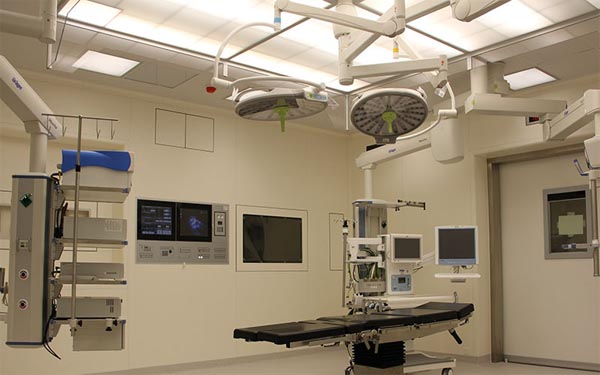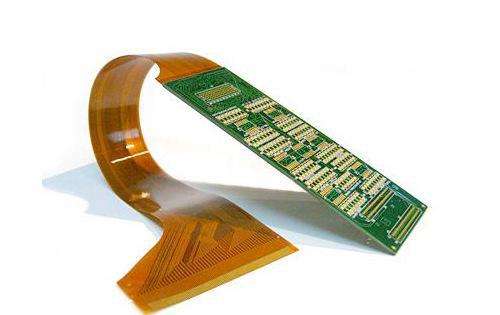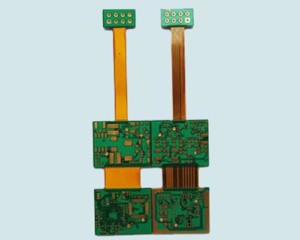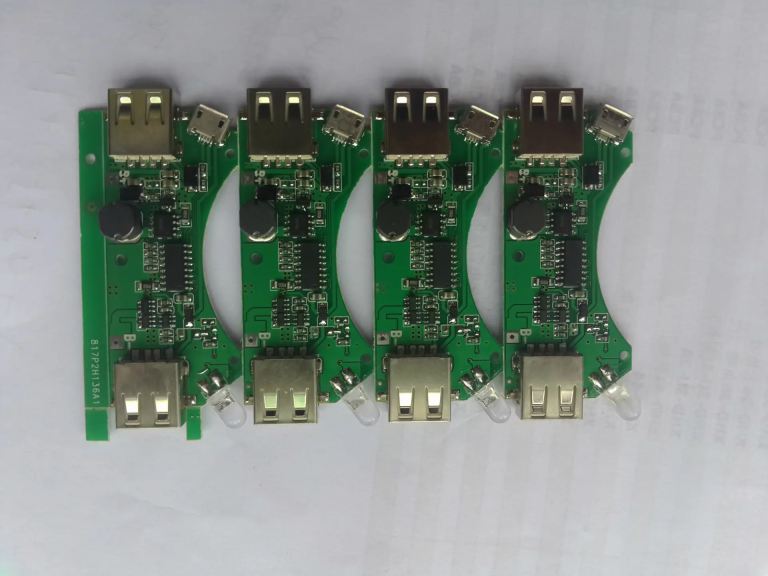flex pcb board
What is a flex PCB?
Flexible PCB (full name: Flexible Printed Circuit Board) refers to a circuit board that can be bent or flexed to fit into tight spaces or unique shapes. These PCBs are usually made of soft plastic substrates. They also use flexible copper conductors to carry electrical signals.
Flexible PCB boards are designed for static or dynamic applications. Static flex PCBs are suitable for applications that do not bend during normal use. On the other hand, Dynamic Flex boards are designed for situations where the board is repeatedly bent during normal use.

Flexible Board Structure
Flexible PCB substrate is the flexible material that makes up the base of the PCB. It is usually made of plastic materials such as polyimide, polyester, or PTE. Most of the time, the flexible PCB substrate is polyimide.
The properties of polyimide, such as high temperature resistance and dimensional stability, make it a good choice for applications where the PCB may be subject to high stress and strain.
Flexible PCB Copper Conductor
This is the conductive element that carries electrical signals on a flexible PCB. The conductor is usually made of a thin, flexible copper tape and can be used in both static and dynamic flexible PCB applications.
The copper can be electrodeposited or roll annealed. Depending on its thickness and other design features, a flexible PCB copper conductor or layer may allow the board to flex more or less.
Flexible PCB Adhesive
In order to bond the different layers, an adhesive material is usually used. Flexible PCB adhesives can be different materials. These include acrylics and epoxies in tape form and pressure-sensitive adhesives.
The most common flexible PCB adhesive is the pressure-sensitive type due to its ability to form a strong bond. It is also easier to apply, making it popular with many different types of flexible circuit boards.
Flexible PCB Coverlay
Flexible PCB coverlay or cover film refers to a thin protective layer (about 0.001 inches) applied to the surface of a flexible PCB to protect the copper conductors and provide insulation.
The cover layer of a flexible PCB is similar to the solder mask of a rigid PCB: both perform similar functions, namely protecting the board from components or other materials.
GET PCB MANUFACTURING AND ASSEMBLY QUOTE NOW!
Types of Flexible PCBs
Several types of flexible PCBs can be manufactured: single-sided flexible PCBs, double-sided flexible PCBs, single-layer flexible PCBs, multi-layer flexible PCBs, and multi-layer PCBs. Listed below are the types of flexible PCBs and their characteristics and applications.
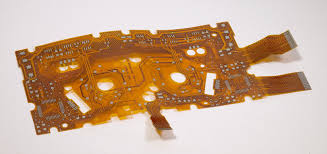
1. Single-Sided Flexible PCBs
Single-sided flexible PCBs consist of a single layer of flexible substrate material with copper conductors on one side. These are the simplest and cheapest types of flexible PCBs to manufacture.
Therefore, these flexible PCBs are often used in applications where the flexibility of the board is the primary concern or where space is very limited, as they can be very thin and fit into tight spaces.
One disadvantage of single-sided flexible PCBs is that they have limited routing options, as all conductors must be placed on a single layer. This can make it difficult to design complex circuits with many components or circuits that require a large number of interconnections.
2. Double-Sided Flexible PCBs
This is a flexible circuit board that has conductive material, usually copper, on both sides of the flexible substrate. Flexible substrates are primarily polyimide, although other materials such as polyester can also be used.
Double-sided flexible PCBs can be designed to include vias that connect the conductive materials on both sides of the substrate, allowing for more complex circuits.
Double-sided flexible PCBs are often used in applications that can offer the advantages of bendability or lighter weight and volume, but do not compromise the need for complex wiring or circuits.
3. Multilayer Flex PCB
As the name implies, a multilayer flexible PCB consists of multiple layers of conductive material embedded in a flexible substrate layer. These are then connected by vias, which are small holes drilled through the substrate to provide electrical connections.
Multilayer flexible circuit boards are generally more complex and more expensive to manufacture than single-layer or double-sided flexible PCBs.
It also requires more design considerations and a more rigorous manufacturing process. Nevertheless, the structure of these flexible PCB types offers many benefits, such as higher interconnect density.
4. Rigid-Flex PCB
Rigid-Flex PCBs consist of flexible and rigid substrate materials. These are connected together to create a single unit. Ideally, it combines the flexibility of a flexible PCB with the rigidity of a standard non-flexible PCB.
As a result, these flexible PCB types can be bent or folded to conform to the shape of the device they are used in, while still providing the necessary rigidity for mounting components or connecting to other circuit boards.
Thin Flexible PCBs
Advantages of Flexible Boards
Flexible PCBs are preferred over PCBs in many different situations due to their ability to bend or flex. Some of the main benefits of flexible PCBs include:
Space Savings: Because they can bend to fit into tight spaces or unique shapes, flexible PCB boards can save space in smaller electronic devices.
Increased Reliability: The flexing properties of flexible PCBs reduce stress and prevent cracking and other forms of damage. This, in turn, means improved reliability in terms of performance.
Increased Durability: The ability of flexible PCB boards to bend and flex without breaking can make them more durable and more resistant to damage from vibration or shock.
Cost Savings: Depending on the application, using custom flexible PCBs can help reduce the overall cost of a product by simplifying the assembly process or reducing the need for connectors or other components.
GET PCB AND ASSEMBLY SERVICE QUOTE NOW!
Using Flexible PCB Circuit Boards

Flexible PCB Applications
The many advantages of flexible PCB boards make them suitable for many different applications. These range from consumer electronics to more complex needs such as aerospace and medical devices. Here is a list of flexible PCB application examples to give you an idea of the uses of such boards.
1. Wearables: Flexible PCBs can be used in wearable devices such as smart watches, fitness trackers, and various medical devices. They are lightweight and take the shape of the human body, providing a comfortable and unobtrusive experience.
2. Mobile Devices: This is another important flexible PCB application today. Examples include mobile devices such as smartphones and tablets. In these uses, flexible boards connect various components such as displays, touch screens, and batteries.
3. Medical Devices: In medical devices such as wearable or implantable and monitoring devices, flexible PCB boards are very useful because it can conform to the shape of the body while also providing dynamic or static flexibility and reducing volume or weight.
4. Aerospace and Defense: Flexible PCBs are also used in aerospace and defense applications, which need to withstand harsh environments and high levels of vibration. These uses include weaponry, navigation systems, communication systems, and radar systems.
5. Automotive: This is a very common flex PCB application. Flex PCBs in cars connect sensors, cameras, and other electronic components in tight spaces and high-vibration environments without breaking.
6. Consumer Electronics: Flex PCBs can be found in many different types of consumer electronics, from cameras and game consoles to home appliances.
Flex Board Price
The cost of a flex PCB is largely affected by several factors: the type of PCB, the number of layers in the PCB, and the size of the board. The materials used also determine the range of flex PCB prices.
The cheapest flex PCB boards include single-layer and single-sided designs. Double-sided or multi-layer flex PCBs cost more due to design complexity and material quality.
To get an accurate number for a flex PCB quote, you may need to contact a PCB manufacturer or supplier and state your specific requirements. Note that prices will also vary from one flex PCB supplier to another, so it helps to shop around and compare options.
Conclusion
Flex PCBs have many advantages. It is also an essential PCB design in many applications today. However, it does require special design considerations and manufacturing processes. Therefore, it is important to work with an experienced manufacturer or designer to ensure that your specific requirements are met.


